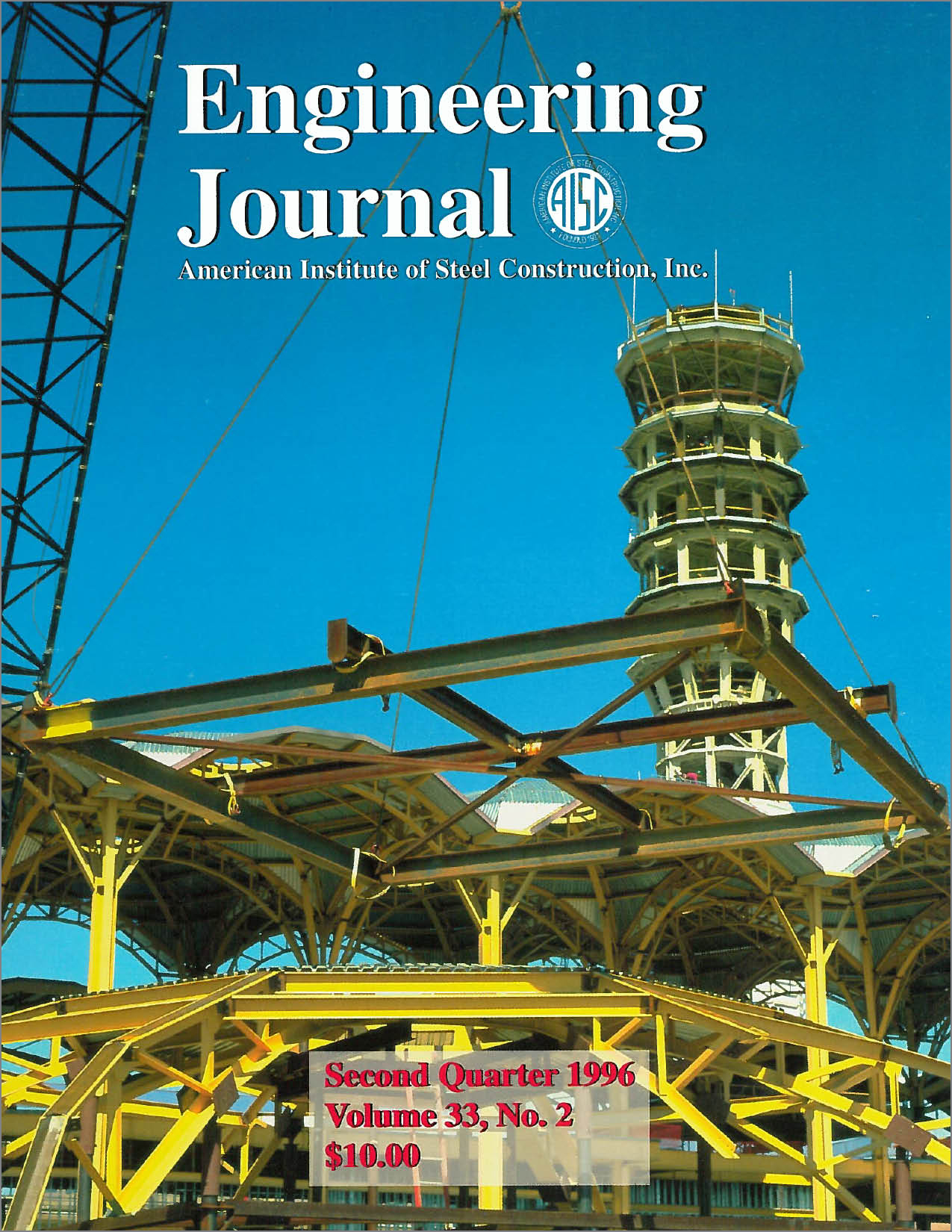Fatigue Life of Double Angle Tension Members
DOI:
https://doi.org/10.62913/engj.v33i2.662Abstract
Alabama Department of Transportation (ALDOT) bridge inspectors discovered failed (cracked) filler plate welds in numerous double angle tension and compression members of the floor trusses of twin tied arch bridges on Interstate 1-65 in late 1990. A typical double angle truss member with a cracked filler plate weld is illustrated. The ends of the filler plates are attached to the back to back legs of the double angles with square groove welds. The welds are approximately two inches long (full width of filler plate) and are ground flush with the outside ends of the filler plates. Based on field test data, the four outer diagonals were found to be the most highly stressed members in the floor trusses. For these four members, the nominal extreme fiber stress ranges near the filler plates due to axial load plus bending varied from 5 to 29 percent higher than the axial stress ranges. The percentage increases in stresses due to bending in these members was found to be unaffected by truck weight or lane position.

